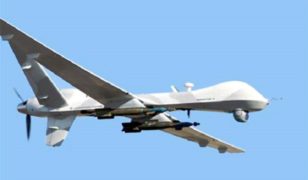DARPA issues solicitation for Near Zero Power RF and Sensor Operations research proposals
 On January 23, the Defense Advanced Research Projects Agency (DARPA), Microsystems Technology Office (MTO) issued a new funding opportunity (solicitation number DARPA-BAA-15-14), Near Zero Power RF and Sensor Operations (N-ZERO). Interested contractors should note that abstracts are due February 20, with full proposals due April 23. DARPA estimates $30M of funding will be available.
On January 23, the Defense Advanced Research Projects Agency (DARPA), Microsystems Technology Office (MTO) issued a new funding opportunity (solicitation number DARPA-BAA-15-14), Near Zero Power RF and Sensor Operations (N-ZERO). Interested contractors should note that abstracts are due February 20, with full proposals due April 23. DARPA estimates $30M of funding will be available.
DARPA seeks to transform the energy efficiency of unattended sensors through elimination or substantial reduction of the stand-by power consumed by the sensors while they await a signature of interest. The improved energy efficiency is expected to result in an increase in the sensor mission lifetime from months to years. The Near Zero Power RF and Sensor Operations (N-ZERO) program aims to create intelligent sensors that can process and detect RF and physical sensor signatures, consume less than 10 nW of power, and attain a low false alarm rate of 1 per hour or better in an urban environment.
The Department of Defense (DoD) has an unfilled need for persistent, event driven sensing capabilities, where physical, electromagnetic and other sensors can remain dormant, with near zero power consumption, until awoken by an external trigger or stimulus. State-of-the-art (SOA) sensors use active electronics to monitor the environment for the external trigger, consuming power continuously and limiting the sensor lifetime to durations of months or less.
The Near Zero Power RF and Sensor Operations (N-ZERO) program intends to extend the lifetime of remotely deployed communications and environmental sensors from months to years. N-ZERO intends to develop the underlying technologies and demonstrate the capability to continuously and passively monitor the environment, and wake-up an electronic circuit upon detection of a specific trigger signature. Thus, sensor lifetime will be limited only by processing and transmission of confirmed events, or ultimately by the battery self-discharge.
By extending sensor operation life, the N-ZERO technology aims to enable new missions that apply unattended ground sensors (UGS). High density, pervasive and persistent UGS networks are desired by the DoD for missions such as force, infrastructure, and border protection.
Often UGS are deployed to detect and communicate infrequent but time critical events. These sensors have no prior knowledge of the event occurrence. In addition to the sensors being actively powered to continuously look for the event, on-board RF receivers must 6 also operate at a high duty-cycle, with correspondingly high power consumption, while awaiting infrequent transmissions from other nodes in the UGS network. In an UGS network, the power consumed by both the sensor and communications electronics waiting for infrequent events contributes significantly to the short UGS operational lifetimes.
N-ZERO will specifically focus on two broad solution areas to the challenges mentioned above:
(1) Unattended sensors monitoring for infrequent events that sense the physical environment continuously, with near zero power consumption. When an event of interest is detected and confirmed, the N-ZERO system will be capable of activating a conventional sensor suite for further sensor data collection and processing. The conventional sensor system expends power only when useful information is present.
(2) Radio receivers that are continuously alert for friendly radio transmissions, with near zero power consumption when transmissions are not present. When an RF trigger signature is detected and confirmed, the N-ZERO system will be capable of activating a conventional radio transceiver to establish an RF link. The conventional radio expends power only when useful information is communicated.
Ultimately, the goal of the N-ZERO program is to design, build, and test devices and microsystems that exploit the energy in, and the unique features of, a signature of interest to process and detect the signature’s presence, reject noise and interference, while consuming less than 10 nW.
Full details are available here.
Source: FedBizOpps







